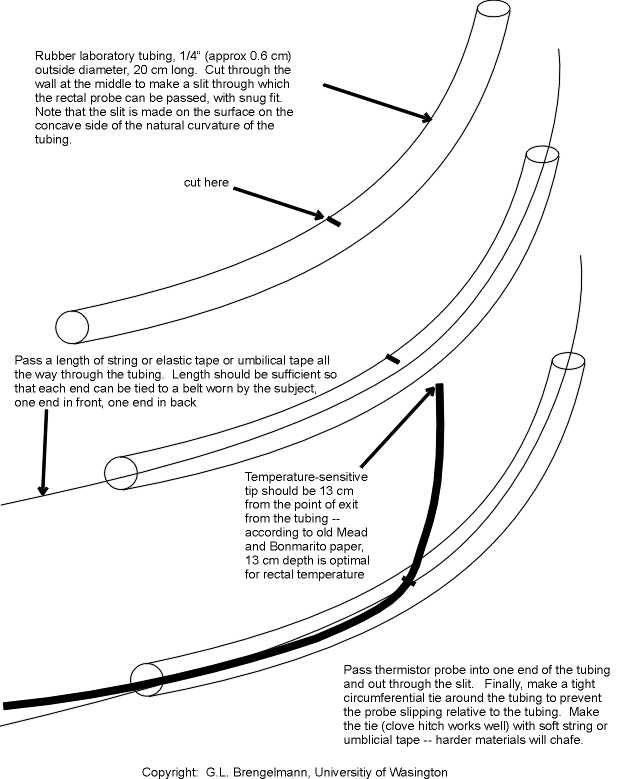In the collaboration with Loring Rowell that resulted in the 1969 publication "Human cardiovascular adjustments to rapid changes in skin temperature during exercise" Rowell,L.B., Murray,J.A., Brengelmann,G.L., Kraning,K.K. Circulation Research 24: 711 - 724, we needed to record rectal temperatures in men exercising hard. The probes tended to slip out during the long sessions. I developed a simple system fabricated from supplies in the laboratory that solved the problem. Since then, the technique has been applied in numerous other studies with men and women who were exercising or carrying out their daily activities in round-the-clock monitoring of circadian rhythms. The probe remains reliably in place and subjects complain of no discomfort. The difficulty of manufacture and cost of materials are both minimal, so probe holders can be discarded after a single use.

The subject must wear a belt that will remain in place around the waist. Various sorts have been used, often rubber straps. If the ends of the string that passes through the rubber tubing are made long enough, they can be looped around the belt, one end in front, the other in back, before the probe is inserted. The subject places lubricating jelly on the tip of the probe, squats, inserts the tip of the probe and guides it to the correct depth, indicated by contact of the tubing. The tubing is arranged comfortably in the crotch and between the buttocks, the subject stands and tightens the strings to hold the tubing in place. Elastic strings and belts are desireable for applications in which the subject will be changing posture.